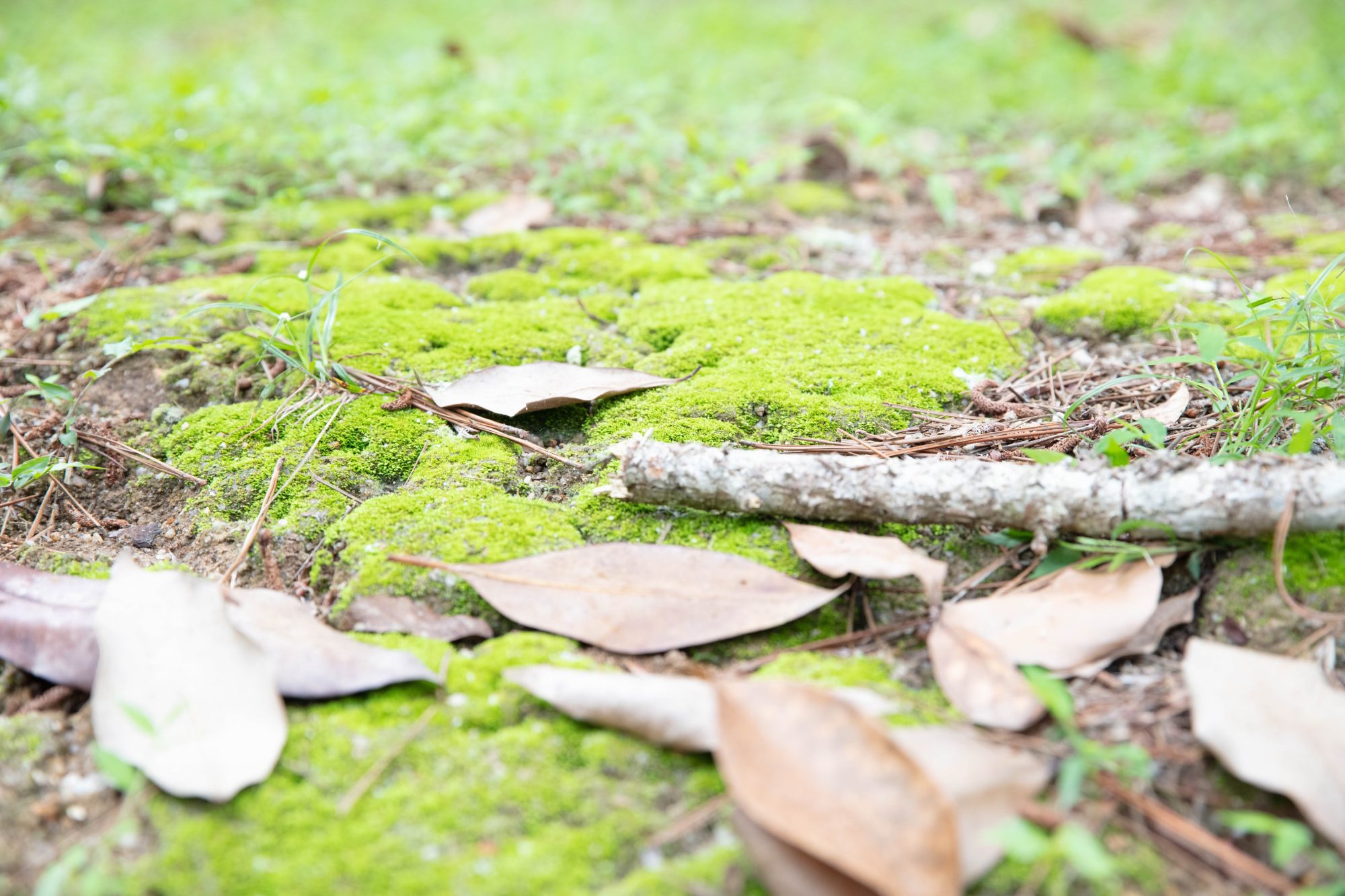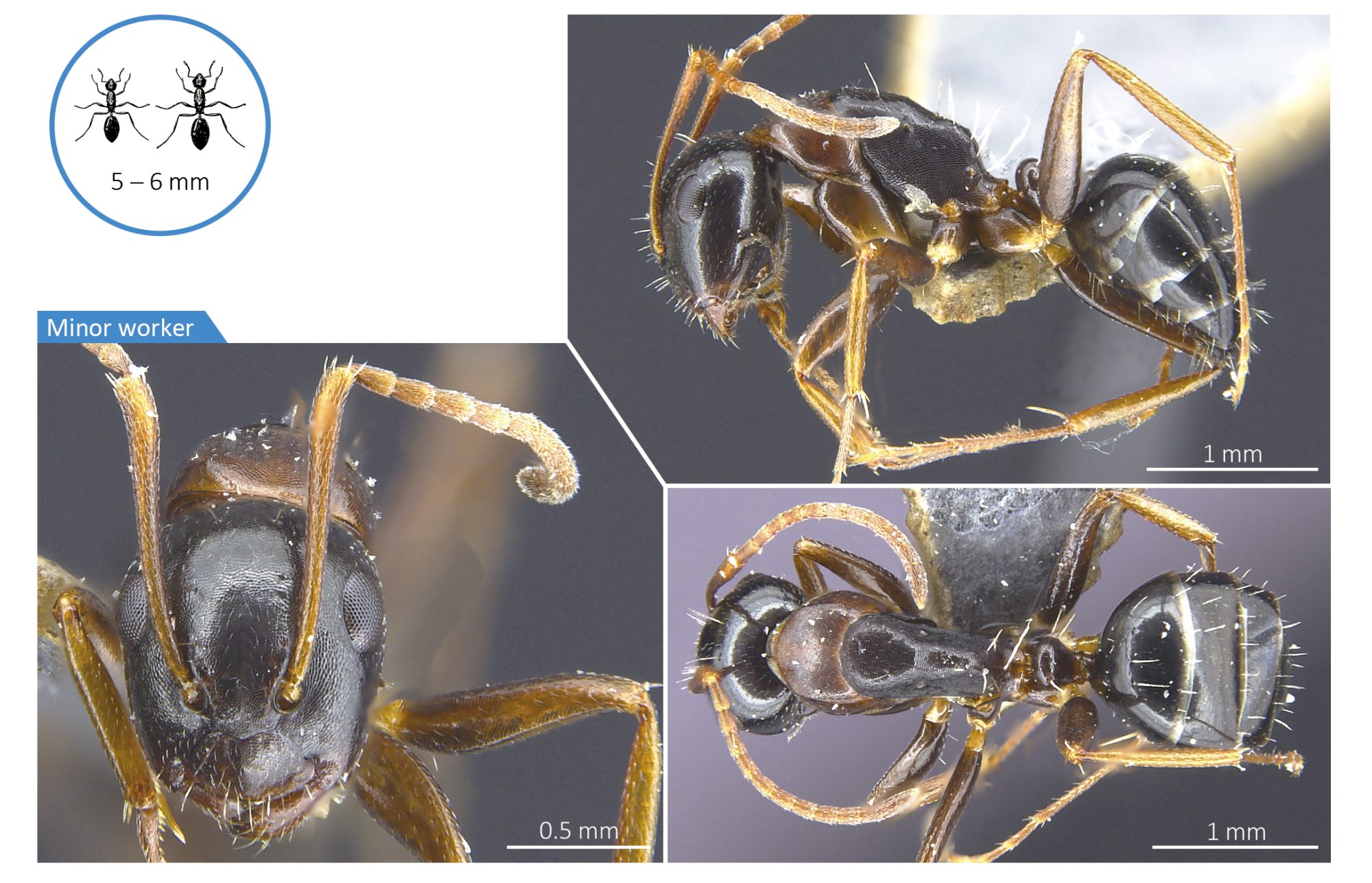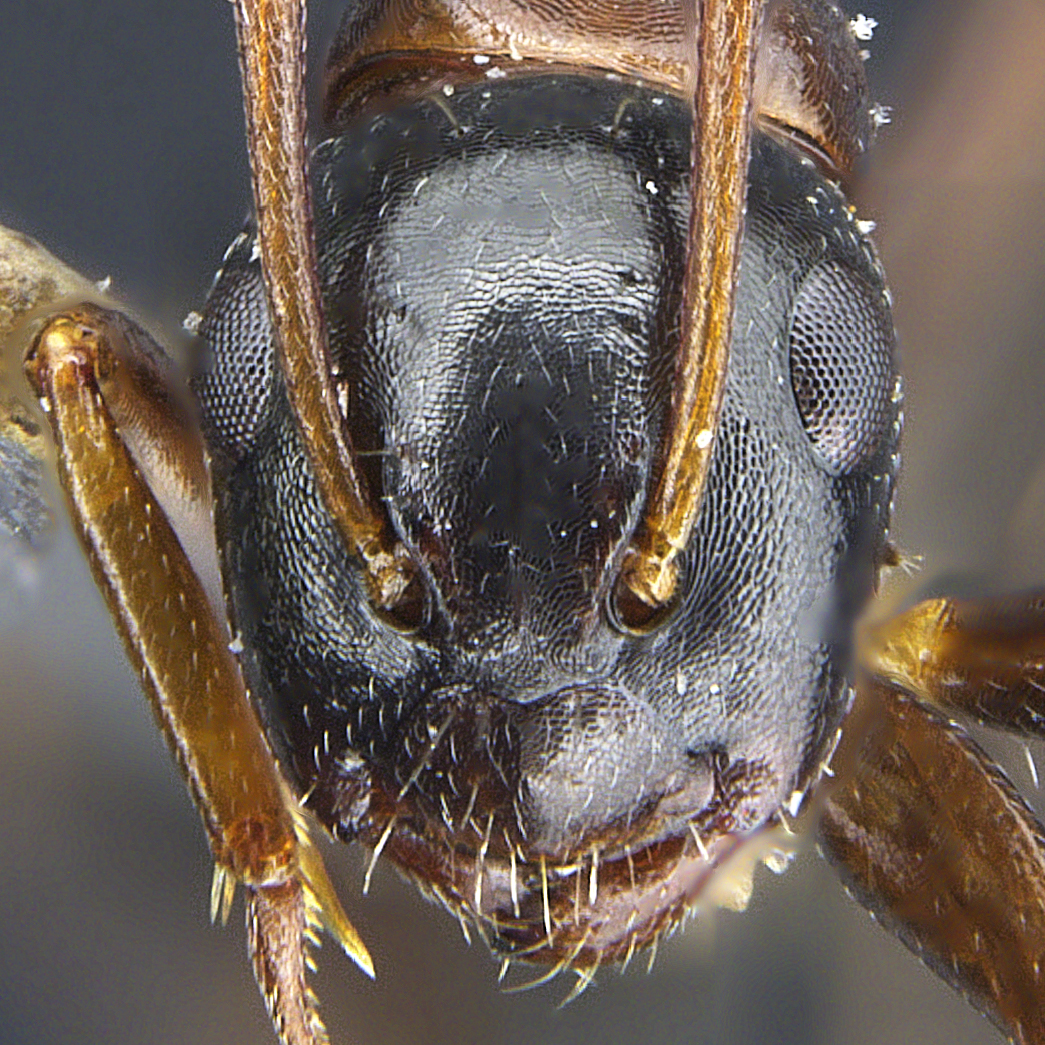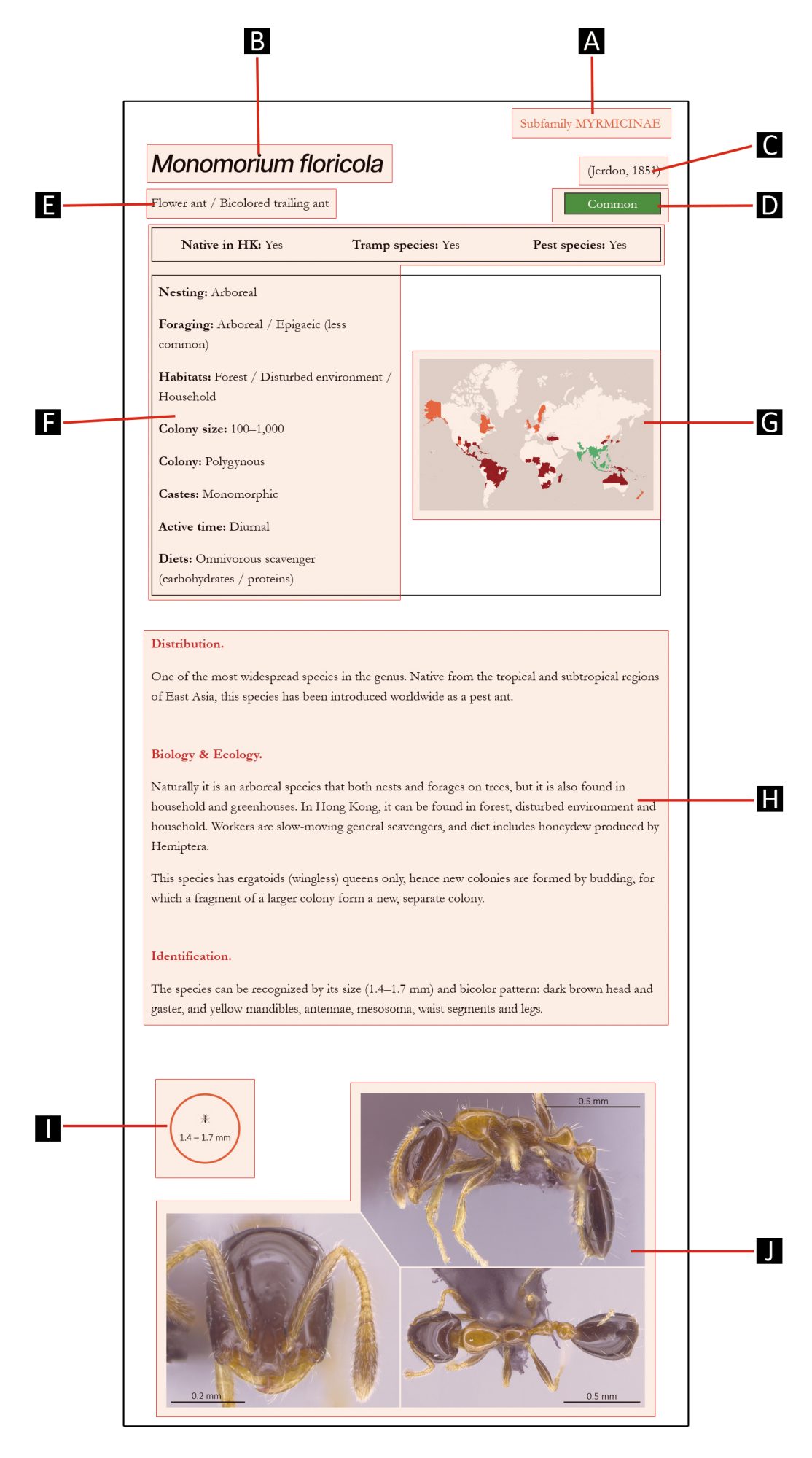
Subfamily FORMICINAE
Camponotus vitiosus
Smith, 1874
Common
Native in HK: Yes
Tramp species: No
Pest species: No
Distribution.
Native from the subtropical and temperate regions of East Asia, this species has a widespread distribution.
Biology & Ecology.
The species is an arboreal species that both nest and forage on trees. It is native to Hong Kong and can be found in forest, on isolated trees as well as in mangroves where it is the most commonly encountered species. Despite being an arboreal species, it, like several other species from the same genus, has been found to have very good swimming capability.
This species is polymorphic, meaning that its workers can be sorted into more than two subcastes: the larger major workers and the smaller minor workers, with intermediate subcastes in-between.
Identification.
The species can be recognized by its head, in full-face view, slightly longer than broad. Workers’ head, mesosoma (except the anterior portion, i.e., pronotum), petiole and gaster are dark brown in color; pronotum, antennae and legs have lighter coloration.




